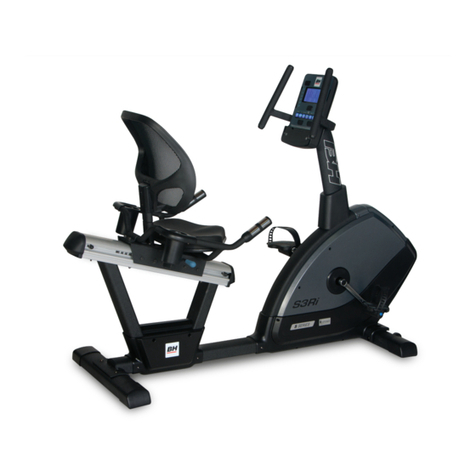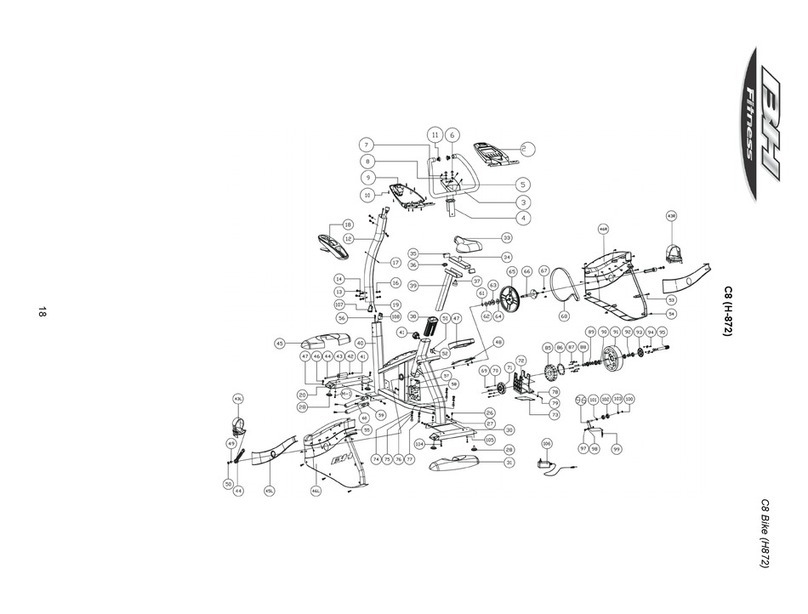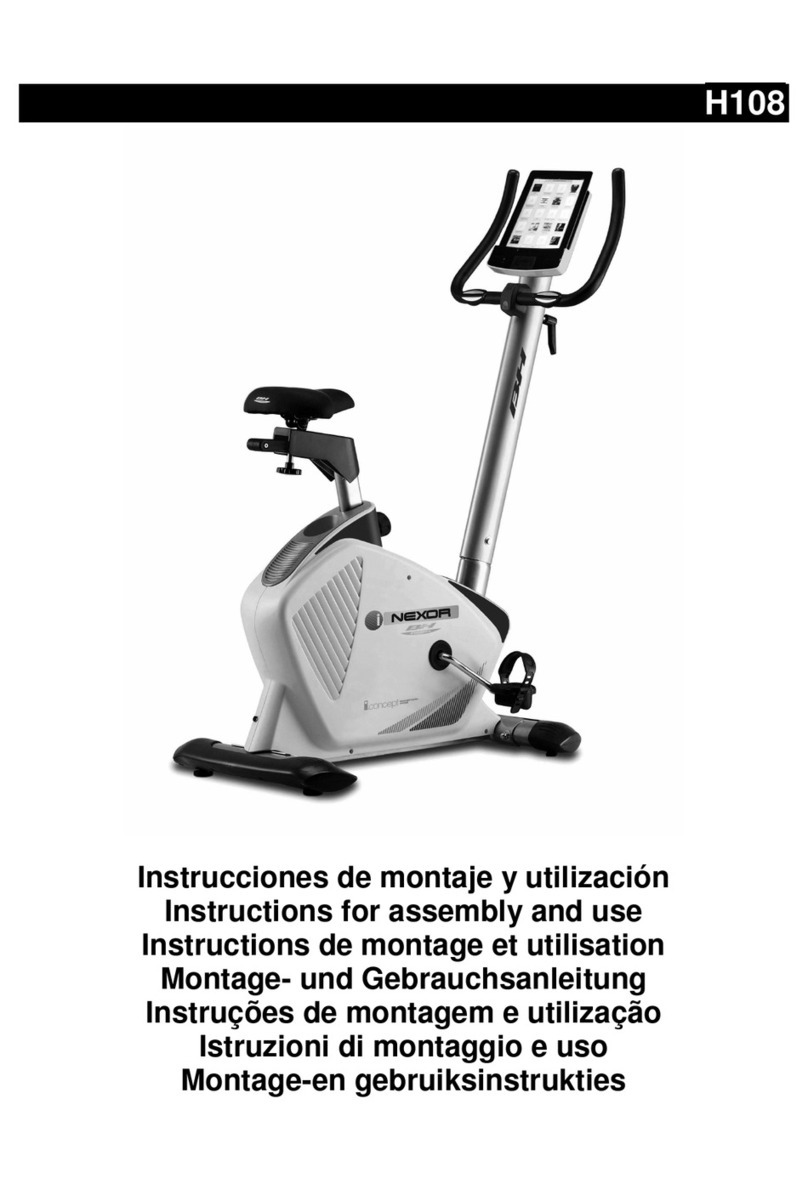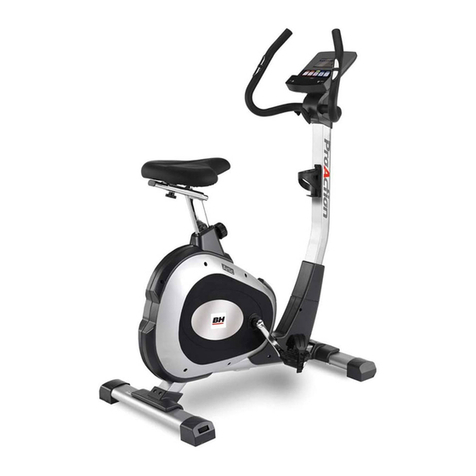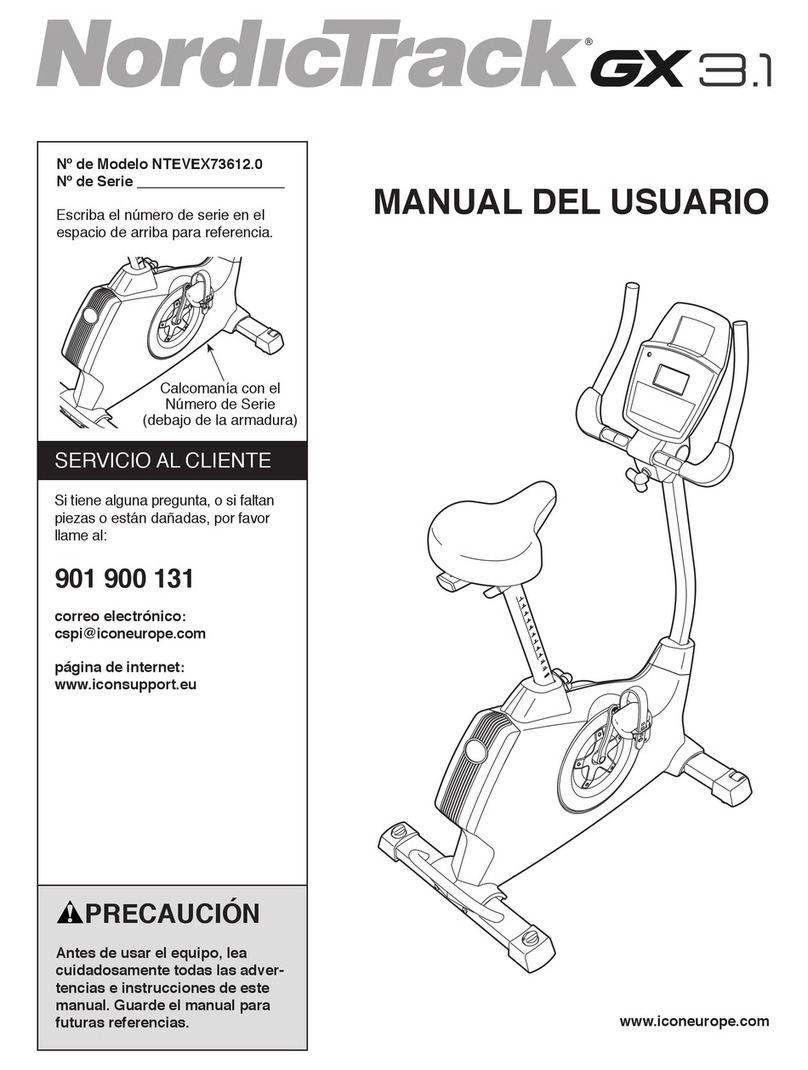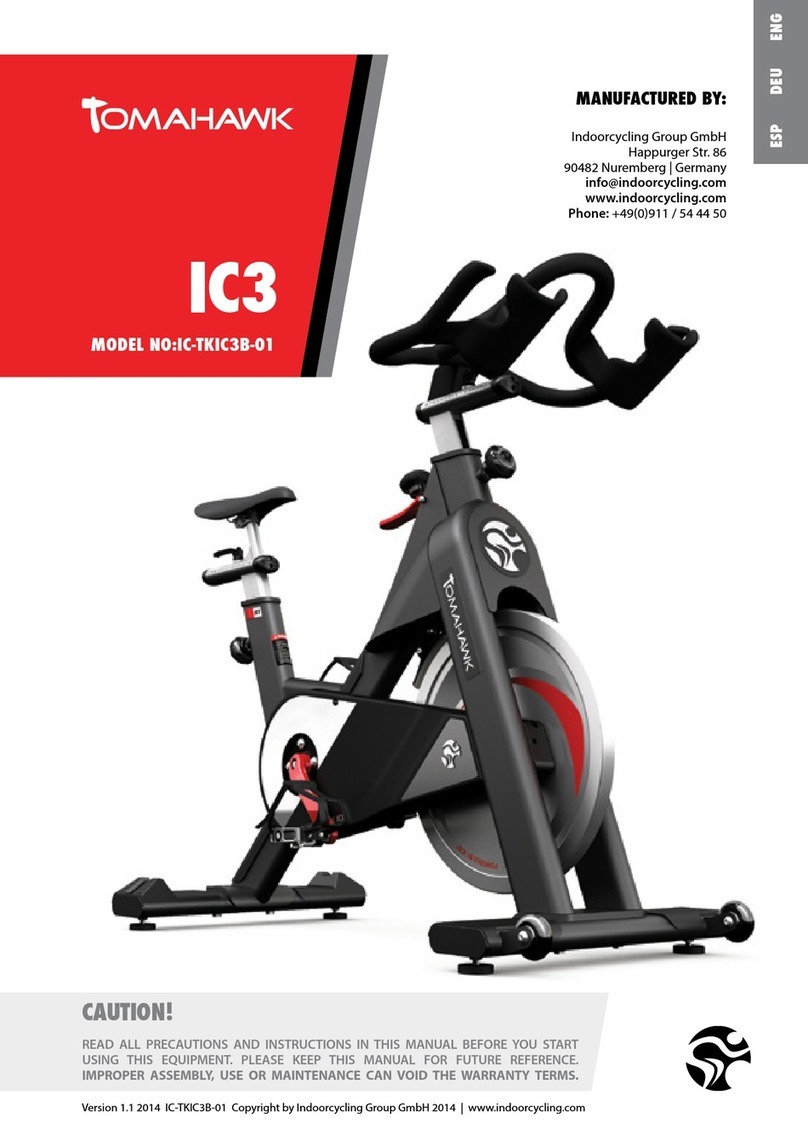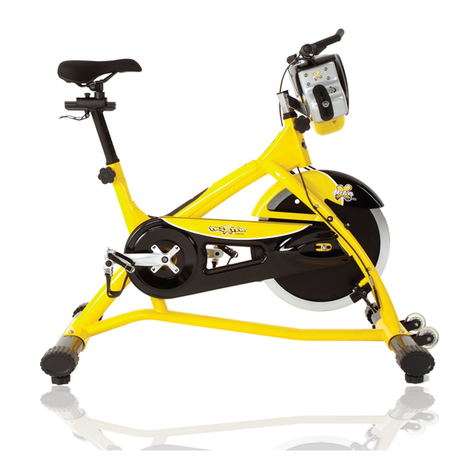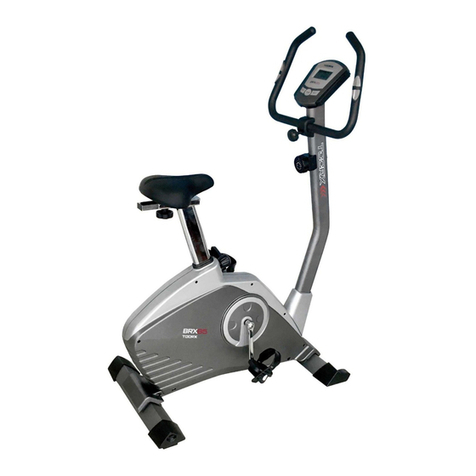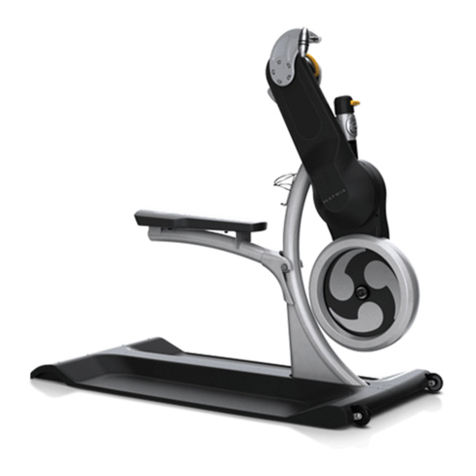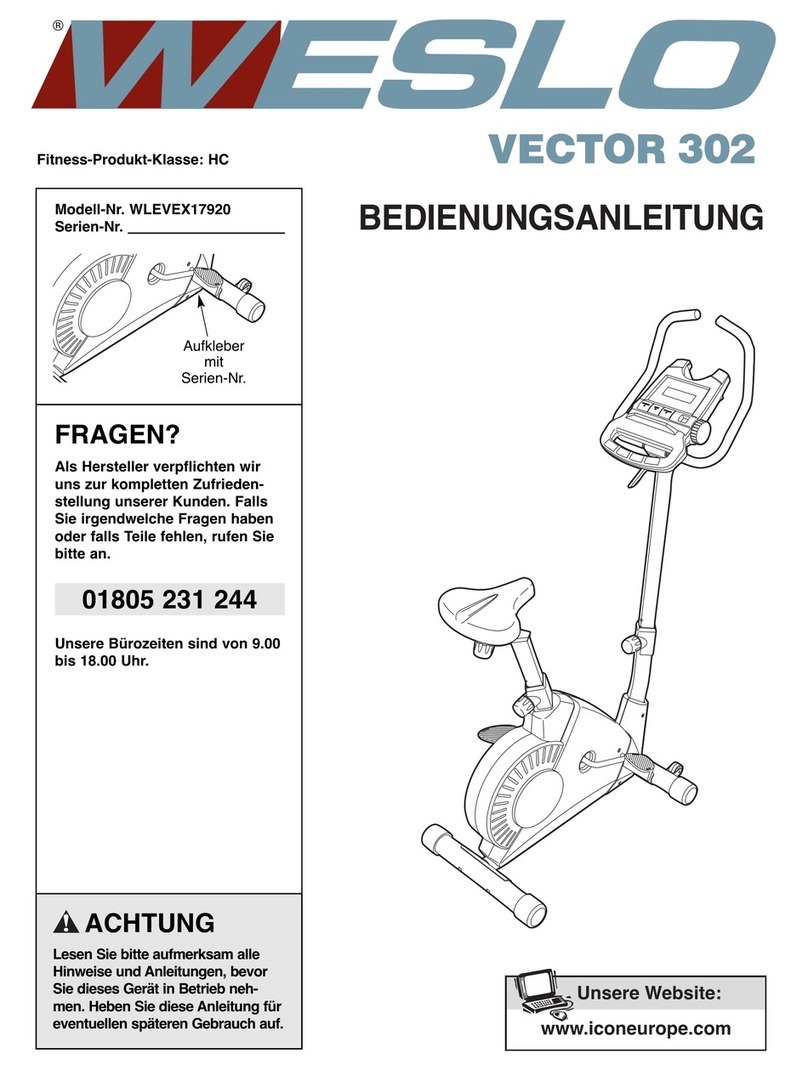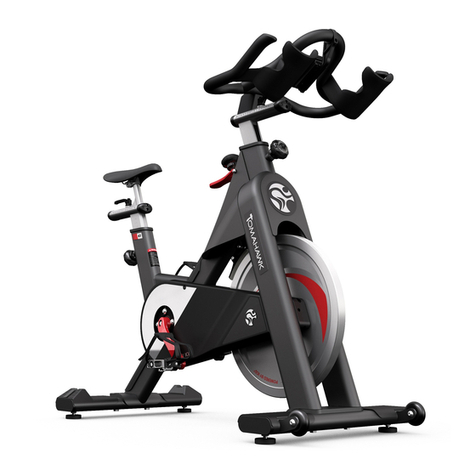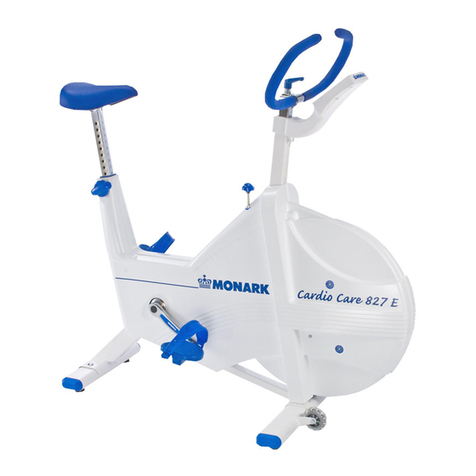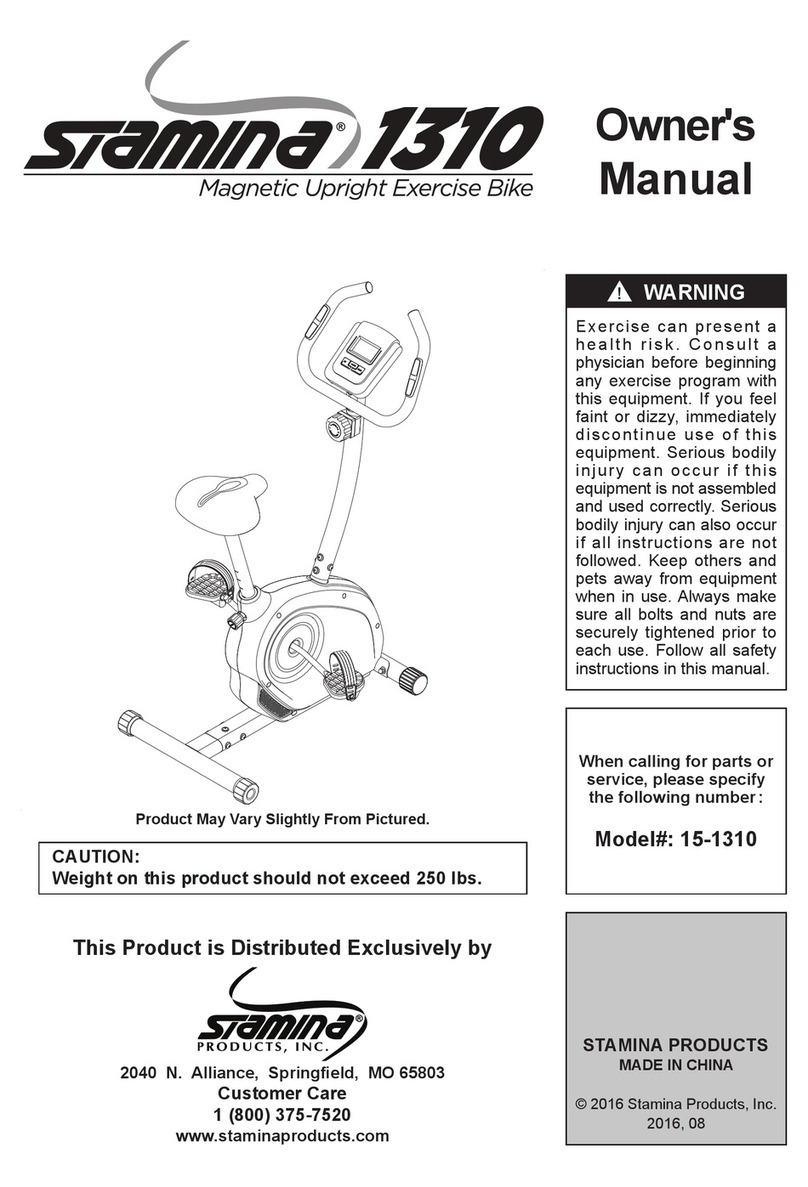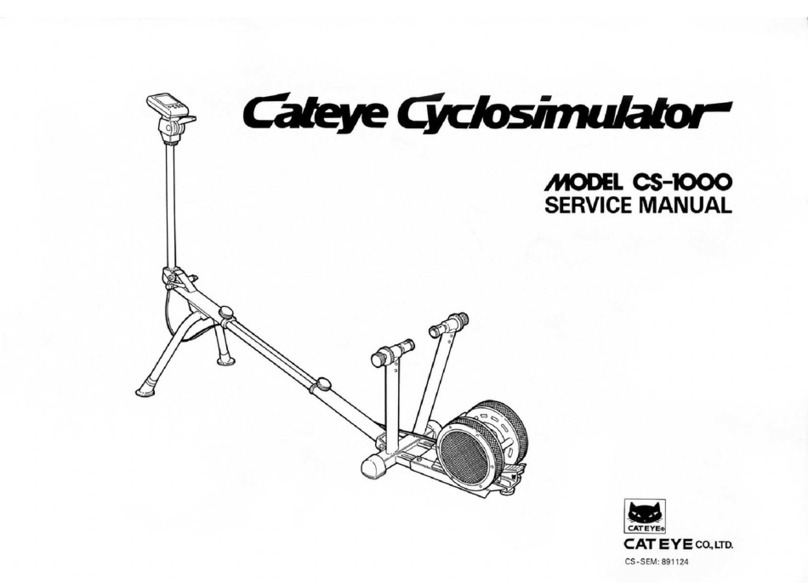8 9
HEART RATE
As you exercise, your heart beat increases. is is often used as a measure of the required intensity of
an exercise. You need to exercise hard enough to condition your circulatory system, and increase your
pulse rate, but not enough to strain your heart.
Your initial level of tness is important when developing an exercise program for you. When starting,
you can get a good training eect with a heart rate of 110-120 beats per minute (BPM). If you are
more t, you will need a higher threshold of stimulation.
To begin with, you should exercise at a level that elevates your heart rate to about 65 to 70% of your
maximum. If you nd this is too easy, you may want to increase it, but it is better to lean on the
conservative side.
As a rule of thumb, the maximum heart rate is 220 minus your age. As you increase in age, your
heart, like other muscles, loses some of its eciency. Some of its natural loss is won back as tness
improves. e following table is a guide to those who are “starting tness.”
Age Target Heart Rate 25 30 35 40 45 50 55 60 65
10 Second Count 23 22 22 21 20 19 19 18 18
Beats per Minute 138 132 132 126 120 114 114 108 108
PULSE COUNT
e pulse count (on your wrist or carotid artery in the neck, taken with two index ngers) is done
for ten seconds, taken a few seconds after you stop exercising. is is for two reasons: (a) 10 seconds
is long enough for accuracy, (b) the pulse count is to approximate your BPM rate at the time you are
exercising. Since heart rate slows as you recover, a longer count isn’t as accurate.
e target is not a magic number, but a general guide. If you’re above average with your tness, you
may work comfortably a little above that suggested for your age group. e following table is a guide.
Age Target Heart Rate 25 30 35 40 45 50 55 60 65
10 Second Count 26 26 25 24 23 22 22 21 20
Beats per Minute 156 156 150 144 138 132 132 126 120
Don’t push yourself too hard to reach the gures on this table. It can be very uncomfortable if you
over exercise. Let it happen naturally as you work through your program. Remember, the target is a
guide, not a rule, a little above or below is just ne.
Two nal comments: (1) don’t be concerned with day to day variations in your pulse rate, being
under pressure or not enough sleep can aect it; (2) your pulse rate is a guide, don’t become a slave
to it.
MUSCLE SORENESS
For the rst week or so, muscle soreness may be the only indication you have that you are on an
exercise program. is, of course, does depend on your overall tness level. A conrmation that you
are on the correct program is a very slight soreness in most major muscle groups. is is quite normal
and will disappear in a matter of days.
If you experience major discomfort, you may be on a program that is too advanced, or you have
increased your program too rapidly.
If you experience PAIN during or after exercise, your body is telling you something. Stop exercising
and consult your doctor.
WHAT TO WEAR
Wear clothing that will not restrict your movement in any way while exercising. Clothes should be
light enough to allow the body to cool. Excessive clothing that causes you to perspire more than you
normally would gives you no advantage. e extra weight you lose is body uid and will be replaced
with the next glass of water you drink. Always wear a pair of athletic shoes.
BREATHING DURING EXERCISE
Do not hold your breath while exercising. Breathe normally as much as possible. Remember,
breathing involves the intake and distribution of oxygen, which feeds the working muscles.
REST PERIODS
Once you start your exercise program, you should continue through to the end. Do not break o
halfway through and then restart at the same place later on without going through the warm-up stage
again. e rest period required between exercises may vary from person to person.
S1UiB_Manual_Bilingual.indd 8-9 11/1/2016 11:22:55 AM











